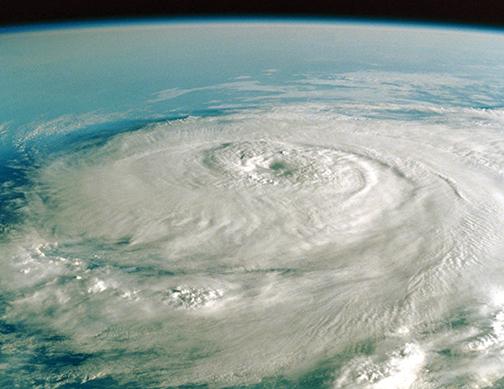The San Diego State research team led by mathematics and statistics professor Samuel Shen developed a “weather time machine” that reconstructs historical precipitation data for the world dating back to 1900.
The computer tool allows scientists to look back in time and analyze how precipitation across the world contributed to major weather events such as the 1930s Dust Bowl. The Dust Bowl can be seen as the largest national disaster ever recorded in U.S. history, Shen said.
This new program can now show that 10 years of drought prior to the catastrophe caused the Dust Bowl and reveals the dangers of past climates.
“We use mathematics, and then we have NASA satellite data, and then we use weather station data from around the world,” Shen said. “So we use powerful mathematics to marry the two powerful data sets. The software simplifies the historical data reconstruction from rocket science to toy science that anybody can play with,” Shen said.
He added that the program is good for science community and the general public because now anybody can have access to this technology.
The program is called SOGP 1.0 and is based on research published last month in the Journal of Atmospheric Sciences. SOGP 1.0 stands for spectral optimal gridding of precipitation.
“This is not a prediction machine,” Shen said. “This can help you analyze the past events and help you analyze risks of climate.”
This makes the software well sought after by insurance companies to use to calculate future climate risks from past weather effects. It can also be made into a smartphone application for people to use everyday.
“Just like you are curious what the weather will be tomorrow, you are curious what was the weather yesterday,” Shen said. “This allows you to go back to yesterday.”
There are three components to the weather time machine: the video, the data surveys, and how the data is generated as a computer program software. The video can then show in red whether the region was dry or in blue if there was increased precipitation.
SDSU graduate students, including Nancy Tafolla and Barbara Sperberg, contributed to the project and collected more than 100 years of precipitation data of the entire globe. From that point forward, with the collaboration of Shen, they analyzed years of data studying climate patterns and trends, Tafolla said.
“It was an enriching experience to work along distinguished professors, scientists and San Diego State colleagues,” she said. “Everyone involved in the project, whether they were professors or students, made critical contributions to the project.”
“The most difficult but also exciting thing was realizing that we were involved in innovated research,” Tafolla said. “You can’t flip to a textbook and find the solution to the problem, you are creating the solution. This takes a great deal of focus, dedication and commitment. It was a full-time job.”
Shen is very grateful to have worked with the graduate students at SDSU and speaks very highly of the program as the co-director of the Center for Climate and Sustainability Studies.
“It’s critical for student participation because students made a lot of contributions,” Shen said. “I really appreciate their hard work and creativity. Without them I could never do this. I thank my students and SDSU. SDSU is a great university on its way to the top.”
This project was a collaboration with the University of Maryland. The National Science Foundation supported and funded the research.







